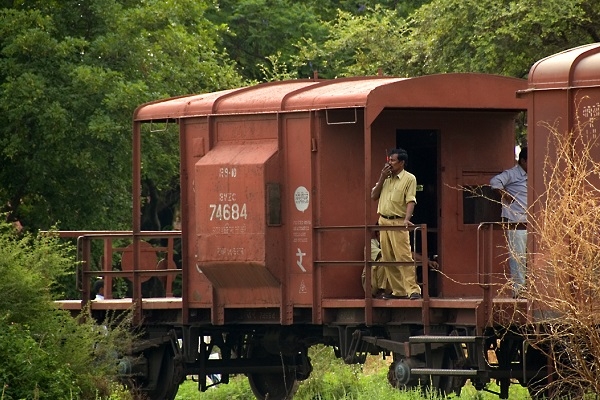Focusing on technology, the Dedicated Freight Corridor Corporation (DFCC) has undertaken trial of the End of Train Telemetry (EoTT) system in the 300 km Bhaupur-Khurja section to do away with guard vans at the rear end of the freight train.
EOTT, also known as the digital guard, would be installed in all freight trains expected to run on the exclusive goods corridor in the country.
The new device aims to discontinue guard vans and the practice of deploying guards at the rear-end of goods trains to ensure all wagons remain intact when the train is in motion.
The equipment is designed to do the guard’s job by giving an indication to the loco driver in case of parting of the wagon or coach from the rear side of the train.
EoTT system comprises of two units — one unit called a cab display unit (CDU) fitted on the locomotive and the other is a sense and brake unit (SBU) fitted on the last coach or wagon of the train.
The EoTT is expected to establish communication between the loco driver and the last wagon of the train to ensure that the freight train is running with all wagons as a complete unit.
The Railways has approved the technology-driven project to acquire a total number of 5,085 EoTT devices at an estimated cost of Rs 500 crore to equip freight trains with the system.
Each set of EoTT devices is estimated to cost approximately Rs 10 lakh.
The technology-driven system, already operational in Western countries, is expected to enhance the loading capacity and efficiency of freight operations.
There are about 7,000 goods trains running in the Indian rail network engaging about 16,000 guards in the country.
According to the Railways, the initiative is a cost-effective project as the guard van would be replaced with a fully loaded wagon as we are increasing the number of wagons in the same trains.
Explaining the system, a senior railway official said: “A transmitter is fitted on a locomotive and a receiver is fitted at the end of the last wagon. The transmitter and the last wagon receiver exchange signals periodically to ensure that the train is running intact.”
“If there is a break in communication between the two units, the driver gets a signal that the train has parted and accordingly, the train has to be stopped to relink the parted wagons.”
However, the Railways maintains that EoTT would not be installed in passenger-carrying trains and the guard vans would continue on passenger services.


